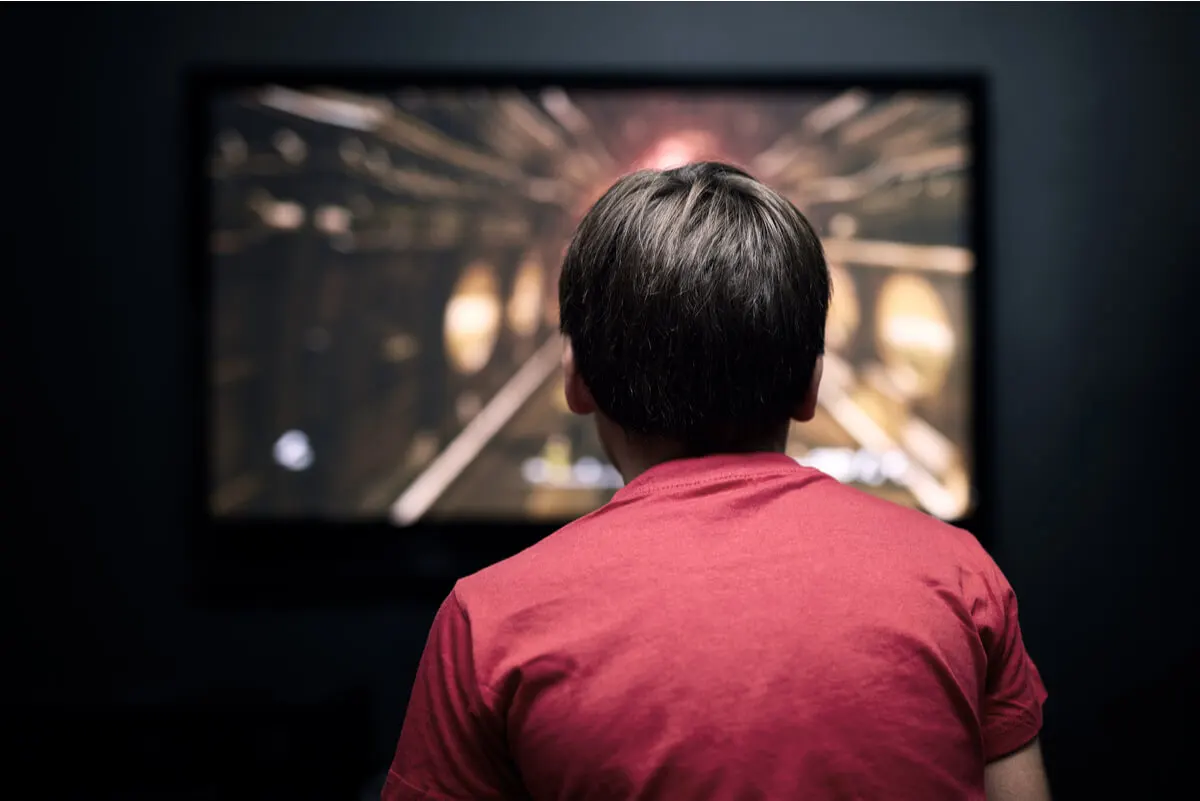What is Cyber Dizziness and Why Does it Occur?

Prolonged and constant use of mobile devices or computers can generate some discomfort in some people. This is experienced with a type of motion sickness called cyber dizziness.
Motion sickness is discomfort that’s experienced by people when traveling in cars or boats. These conditions appear when the structures in charge of posture control send contradictory signals to the brain. The signals interpret that there’s an alteration, so that the characteristic symptoms appear.
The term cyber dizziness has existed since the 1990s. However, it was only associated with virtual reality (VR) devices. In fact, studies claim that more than 60% of people who used VR experiences developed the condition. Nowadays, the discomfort can also appear after several hours on social networks or virtual conferences.
The signs and symptoms of cyber dizziness
The symptoms reported by people with cyber dizziness are very similar to those presented by those with car sickness. Specialists usually divide the clinical manifestations into nausea, oculomotor disturbances, and general disorientation.
Nausea is one of the first manifestations of the condition and is defined as the subjective sensation of approaching vomiting. This symptom tends to worsen with bad smells or if the stomach is full, such as when traveling by ship or airplane. Research affirms that motion sickness or motion sickness presents the same sensations and symptoms as cyber dizziness.
Oculomotor disorders refer to all those symptoms related to the third cranial nerve or oculomotor nerve. This nerve is in charge of eye movements and is very active when using electronic devices. These disorders include visual fatigue and headaches.
Finally, general disorientation is usually manifested through dizziness and vertigo. These symptoms are usually the most severe and can limit daily activities.

We think you may be interested in reading this, too: The Top 10 Mobile Phones that Emit the Most Radiation
Why does cyber dizziness occur?
First, it’s important to know how the human body is able to maintain balance and posture. Maintaining them is a complex process involving vision, proprioceptive receptors, and the vestibular system of the ear. All these structures send signals to the brain that allow it to adapt to the environment.
Cyber dizziness occurs when the structures responsible for maintaining balance send contradictory signals to the brain. The sight will signal the nervous system that there’s movement by seeing moving images. On the other hand, the vestibular system and proprioception won’t detect any type of movement, since the person is sitting or standing still.
Some studies reveal that the intensity of the symptoms depends on the variation in the sensitivity of the visual movement of each person. Many of the activities carried out on mobile devices and social networks can trigger an episode of cyber dizziness.
Among the main triggers of the condition are the following:
- Scrolling through the feed of social networks
- Using virtual reality devices
- Participating in videoconferences with slides
- Playing action and adventure video games
- Watching screens with flashing lights
Similarly, research affirms that the onset of cyber sickness seems to be influenced by biological factors. In this sense, it’s estimated that women are more likely to experience the symptoms than men. In addition, people between the ages of 5 and 12, as well as patients suffering from migraines, are more likely to experience this condition.
How can cyber dizziness be treated?
Treatment for cyber dizziness consists of taking a break from what you’re doing on the screen. The best time to do this is at the onset of symptoms, when the intensity of the symptoms is mild. The importance of resting is because vertigo can persist even when the eyes are closed.
People should also try to stimulate the sense of sight in the right way. The idea is to send signals to the brain that there’s no movement of any kind. A good way to achieve this is to fix the gaze on the horizon or on a specific point until the annoying signs disappear.
The effectiveness of pharmacological treatment is very limited. Some research establishes that antihistamines may be useful in the treatment of motion sickness. Thus, over-the-counter drugs such as cetirizine, diphenhydramine, and loratadine may help.
We think you may also enjoy reading this article: Four Negative Effects of Cell Phone Use That You Did Not Know
Preventing cyber dizziness
Fortunately, there are certain measures that can be taken to prevent the onset of cyber motion sickness. These consist of reducing the amount of time spent in front of a screen. It’s impossible to eliminate screens from daily life, but following these recommendations can help:
- Take short breaks and stop staring at a screen every 40 minutes.
- Fix your eyes on a stable point every so often.
- Don’t use more than one screen at a time.
- Give audio conferences instead of videoconferences, whenever possible.
- Reduce scrolling speed on social networks.
- Chew gum.
- Breathing deeply.
In some cases, it’s impossible to take breaks or look away from the screen, so cyber dizziness becomes unavoidable. The reduction in the intensity of symptoms is of greater importance when this occurs. This can be achieved by avoiding heavy meals and being in a well-ventilated environment.

Cyber dizziness: A condition that’s becoming more common
The use of screens and digital media has led to an increase in the incidence of cyber dizziness in recent years. This is an alteration produced by the interpretation of contradictory stimuli in the brain. Its main signs are nausea, vertigo, and eye fatigue.
Fortunately, the necessary measures to prevent the onset of the discomfort are very simple and anyone can do them. The symptoms of cyber dizziness are harmless and disappear when the stimulus ceases.
All cited sources were thoroughly reviewed by our team to ensure their quality, reliability, currency, and validity. The bibliography of this article was considered reliable and of academic or scientific accuracy.
- Stanney K, Lawson B, Rokers B, Dennison M et al. Identifying Causes of and Solutions for Cybersickness in Immersive Technology: Reformulation of a Research and Development Agenda. International Journal of Human–Computer Interaction. 2020; 36(19): 1783-1803.
- Weech S, Kenny S, Barnett-Cowan M. Presence and Cybersickness in Virtual Reality Are Negatively Related: A Review. Front Psychol. 2019 Feb 4;10:158.
- Gallagher M, Ferrè ER. Cybersickness: a Multisensory Integration Perspective. Multisens Res. 2018 Jan 1;31(7):645-674.
- Weech S, Wall T, Barnett-Cowan M. Reduction of cybersickness during and immediately following noisy galvanic vestibular stimulation. Exp Brain Res. 2020 Feb;238(2):427-437.
- Bos JE, van Leeuwen RB, Bruintjes TD. Motion sickness in motion: from carsickness to cybersickness. Ned Tijdschr Geneeskd. 2018;162:D1760.
- Weech S, Varghese JP, Barnett-Cowan M. Estimating the sensorimotor components of cybersickness. J Neurophysiol. 2018 Nov 1;120(5):2201-2217.
- Quintana P, Bouchard S, Serrano B; Cárdenas-López G. Los efectos secundarios negativos de la inmersión con realidad virtual en poblaciones clínicas que padecen ansiedad. Revista de Psicopatología y Psicología Clínica. 2014: 19 (3): 197-207.
- Mazloumi Gavgani A, Walker F, Hodgson D, Nalivaiko E. A comparative study of cybersickness during exposure to virtual reality and “classic” motion sickness: are they different?. Journal of Applied Physiology. 2018;125(6):1670-1680.
This text is provided for informational purposes only and does not replace consultation with a professional. If in doubt, consult your specialist.








